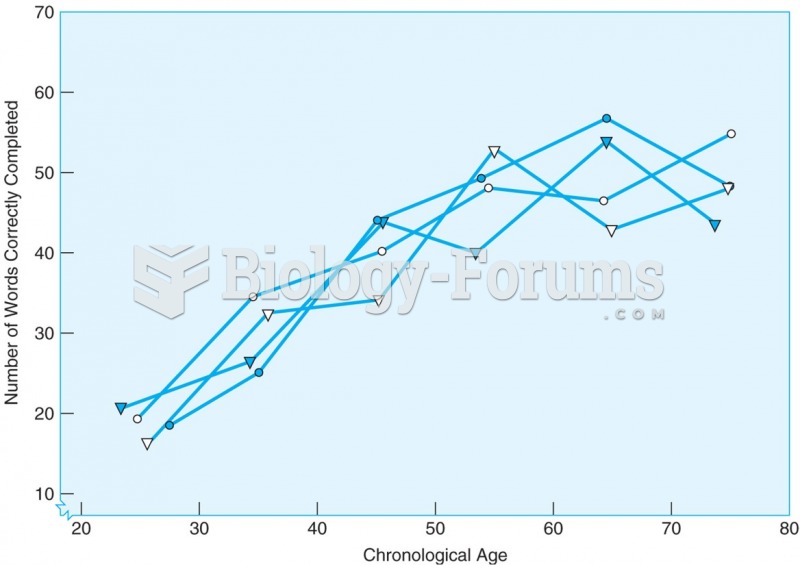|
|
|
The first oral chemotherapy drug for colon cancer was approved by FDA in 2001.
Cocaine was isolated in 1860 and first used as a local anesthetic in 1884. Its first clinical use was by Sigmund Freud to wean a patient from morphine addiction. The fictional character Sherlock Holmes was supposed to be addicted to cocaine by injection.
The term bacteria was devised in the 19th century by German biologist Ferdinand Cohn. He based it on the Greek word "bakterion" meaning a small rod or staff. Cohn is considered to be the father of modern bacteriology.
Malaria was not eliminated in the United States until 1951. The term eliminated means that no new cases arise in a country for 3 years.
When intravenous medications are involved in adverse drug events, their harmful effects may occur more rapidly, and be more severe than errors with oral medications. This is due to the direct administration into the bloodstream.
 The number of words correctly completed in the New York Times crossword puzzle increases with age ...
The number of words correctly completed in the New York Times crossword puzzle increases with age ...
 The high-voltage shut-off switch on a Ford Escape hybrid. The switch is located under the carpet at ...
The high-voltage shut-off switch on a Ford Escape hybrid. The switch is located under the carpet at ...
 This PCM on a Chrysler vehicle can only be seen by hoisting the vehicle because it is located next ...
This PCM on a Chrysler vehicle can only be seen by hoisting the vehicle because it is located next ...




